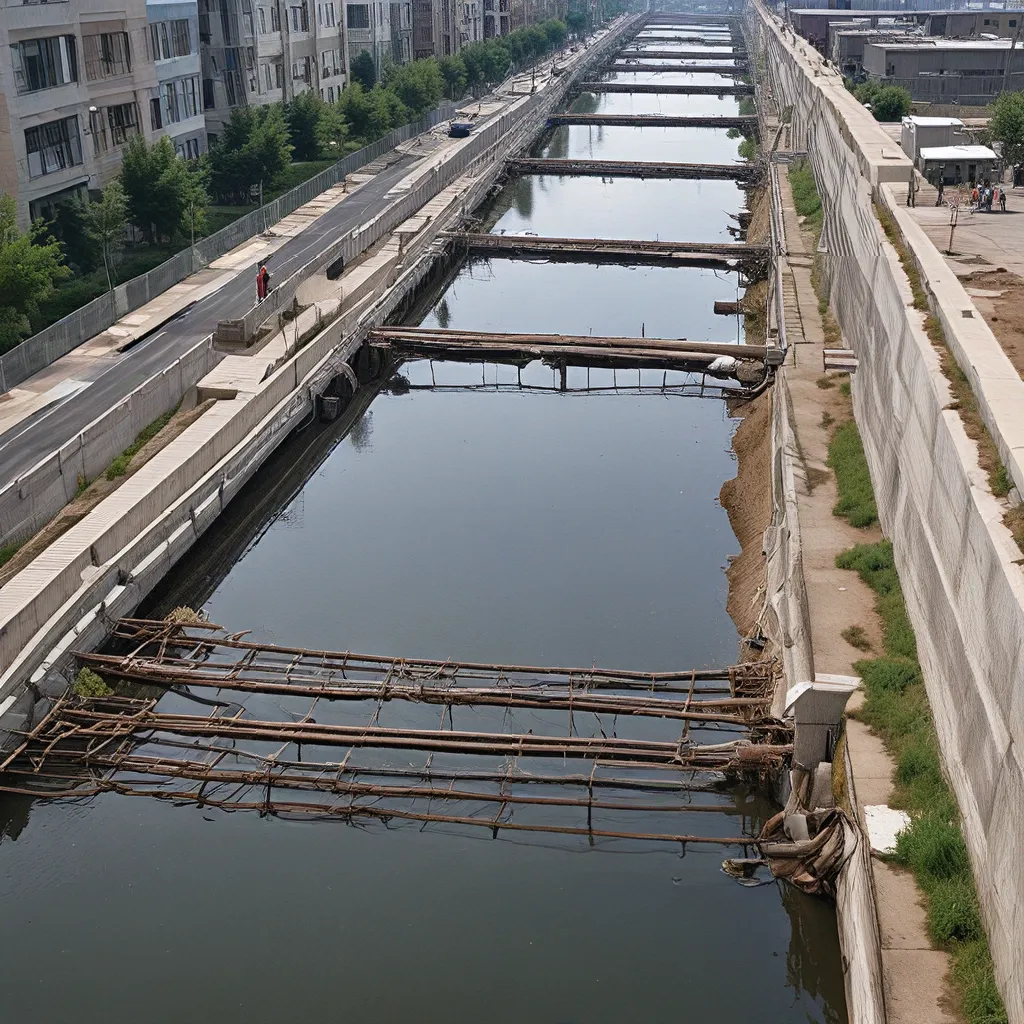
As an urban dweller, I’ve always been fascinated by the complex web of infrastructure that keeps our cities running. And at the heart of this intricate system lies the often-overlooked world of wastewater management. It’s a realm that, quite literally, shapes the health and wellbeing of our communities.
Recently, I’ve been diving deep into the topic of sustainable wastewater management and its integration with urban planning. And let me tell you, it’s a revelation that has got me rethinking everything I thought I knew about the water that flows through our taps and drains.
You see, traditional approaches to wastewater treatment have often been, well, traditional – a one-size-fits-all solution that fails to account for the unique needs and challenges of our ever-evolving cities. But the tide is turning, and a new wave of innovative thinking is transforming the way we view and manage this vital resource.
Rethinking the Urban Water Cycle
One of the key insights that has emerged from the research is the need to view wastewater management as an integral part of the urban water cycle, rather than a siloed afterthought. Gone are the days of simply flushing our wastewater away and hoping for the best. Instead, we’re starting to see the immense potential in closing the loop and reclaiming this valuable resource.
Just take a look at the work being done by the MDPI (Multidisciplinary Digital Publishing Institute) researchers. Their studies have highlighted the importance of integrating wastewater management strategies into the broader framework of urban planning and design. By considering water as a precious commodity, rather than a waste product, we can unlock a wealth of opportunities for sustainable urban development.
Embracing the Circular Economy
At the heart of this shift is the concept of the circular economy – a model that encourages the reuse, recycling, and repurposing of resources, rather than the traditional linear “take-make-waste” approach. And when it comes to wastewater, the possibilities are truly endless.
Imagine a future where the water that flows down our drains isn’t simply flushed away, but instead, is treated and reclaimed for beneficial uses. This could include everything from irrigation for urban greenspaces to industrial processes and even potable water supply. It’s a vision that not only reduces our environmental impact but also enhances the resilience and self-sufficiency of our cities.
Integrating Wastewater into Urban Planning
But putting this vision into practice requires a fundamental shift in the way we approach urban planning and development. It’s no longer enough to simply tack on a wastewater treatment plant as an afterthought. Instead, wastewater management needs to be a central consideration from the very beginning, shaping the way we design our cities, neighborhoods, and individual buildings.
The researchers at MDPI have highlighted several key strategies for integrating sustainable wastewater management into urban planning, including:
Decentralized Treatment Systems: Rather than relying on a single, centralized treatment facility, the move towards decentralized, localized systems can reduce the energy and infrastructure costs associated with wastewater management. These small-scale solutions can be tailored to the specific needs of a community or even a individual building.
Water Reuse and Recycling: By implementing systems for water reuse and recycling, cities can reduce their overall water consumption and minimize the strain on freshwater resources. This could include everything from greywater systems that recycle household water for irrigation, to industrial water recycling that keeps process water in continuous use.
Nature-based Solutions: Incorporating nature-based solutions, such as constructed wetlands and green infrastructure, can enhance the natural treatment and filtration of wastewater, while also providing additional benefits like habitat creation and urban cooling.
Adaptive and Flexible Design: Designing wastewater systems with adaptability and flexibility in mind can help cities respond to changing circumstances, such as population growth, climate change, or emerging technologies. This could involve modular, scalable infrastructure or integrating wastewater management with broader urban resilience strategies.
The Role of Technology and Innovation
Of course, integrating sustainable wastewater management into urban planning is no small feat. It requires a holistic, multidisciplinary approach that brings together urban planners, engineers, policymakers, and community stakeholders. And the good news is that the tools and technologies to make this a reality are rapidly evolving.
From advanced treatment processes like membrane filtration and anaerobic digestion, to smart monitoring and control systems, the landscape of wastewater management is being transformed by innovation. And as these technologies continue to mature and become more accessible, the opportunities for sustainable urban water management** will only continue to grow.
Embracing the Challenge, Reaping the Rewards
I’ll admit, when I first started exploring this topic, I was a bit daunted by the complexity of it all. But the more I’ve learned, the more excited I’ve become about the transformative potential of sustainable wastewater management.
Because at the end of the day, it’s not just about managing our waste. It’s about rethinking the way we live in and engage with our urban environments. It’s about building cities that are resilient, regenerative, and in harmony with the natural systems that sustain us**.
So, who’s ready to dive in and explore the fascinating world of urban wastewater management? I, for one, can’t wait to see what the future holds.